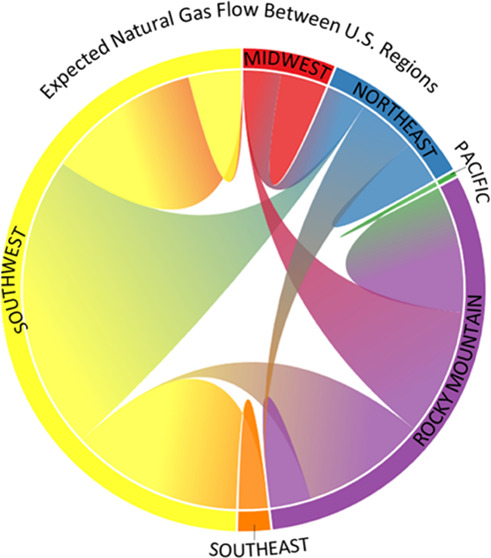- Record: found
- Abstract: found
- Article: found
Life Cycle GHG Perspective on U.S. Natural Gas Delivery Pathways

Read this article at
Abstract

Recent emission measurement campaigns have improved our understanding of the total greenhouse gas (GHG) emissions across the natural gas supply chain, the individual components that contribute to these emissions, and how these emissions vary geographically. However, our current understanding of natural gas supply chain emissions does not account for the linkages between specific production basins and consumers. This work provides a detailed life cycle perspective on how GHG emissions vary according to where natural gas is produced and where it is delivered. This is accomplished by disaggregating transmission and distribution infrastructure into six regions, balancing natural gas supply and demand locations to infer the likely pathways between production and delivery, and incorporating new data on distribution meters. The average transmission distance for U.S. natural gas is 815 km but ranges from 45 to 3000 km across estimated production-to-delivery pairings. In terms of 100-year global warming potentials, the delivery of one megajoule (MJ) of natural gas to the Pacific region has the highest mean life cycle GHG emissions (13.0 g CO 2e/MJ) and the delivery of natural gas to the Northeast U.S. has the lowest mean life cycle GHG emissions (8.1 g CO 2e/MJ). The cradle-to-delivery scenarios developed in this work show that a national average does not adequately represent the upstream GHG emission intensity for natural gas from a specific basin or delivered to a specific consumer.
Abstract
This study provides a detailed life cycle perspective on how GHG emissions vary according to where natural gas is produced and where it is delivered.
Related collections
Most cited references27
- Record: found
- Abstract: found
- Article: not found
Assessment of methane emissions from the U.S. oil and gas supply chain
- Record: found
- Abstract: found
- Article: not found
Measurements of methane emissions at natural gas production sites in the United States.
- Record: found
- Abstract: not found
- Article: not found